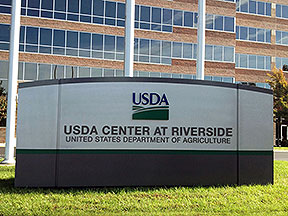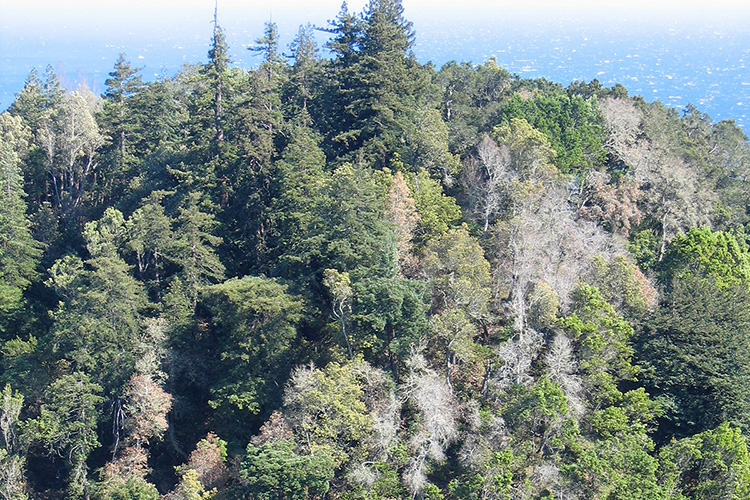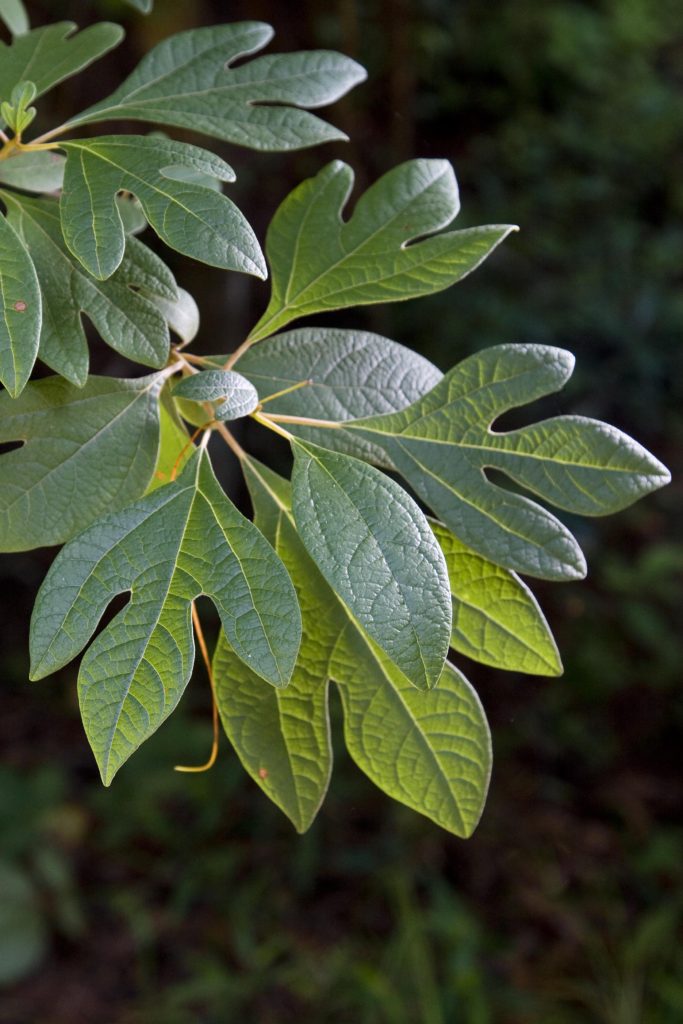As happens every year, the Administration has proposed a budget for funding government programs in the next Fiscal Year (FY) – which begins on October 1, 2020 (FY2021). This proposal is not the final word. Congress will pass appropriations bills that will specify actual funding levels. NOW is the time for you to tell senators and representatives in Congress how much money you think agencies need to count tree-killing pests next year.
Pest programs most affected:
- Sudden oak death (SOD):
- Combination of goldspotted oak borer, laurel wilt, and thousand cankers disease
- Port-Orford cedar root disease
- Threats to whitebark pines
- emerald ash borer
USDA Forest Service (USFS)
For the USFS, the Administration proposes alarming cuts.
Forest and Rangeland Research Program
FY18 F719 FY20 FY21 proposed
297,000,000 300,000,000 305,000,000 249,330,000
[In FYs 18 – 20, Forest Inventory & Analysis received $77 million of this total; the proposal for FY21 is $78.5 million. Under this proposal, inventory would receive more than 30% of all research funding!]
The Administration proposes to cut USFS R&D overall by 25%. Also, it calls for closing the Pacific Southwest Research Station in California.
These proposed cuts would come on top of severe reductions over the past decade. Although the appropriation does not provide specific spending figures for invasive species, funding for research conducted by the seven research stations on ten non-native pests decreased from $10 million in FY2010 to just $2.5 million in FY2020 – a cut of more than 70%. The Service’s ability to develop effective tools to manage the growing number of pests threatening the health of the Nation’s forests is already crippled by the earlier cuts.
The proposal to close the Pacific Southwest Research Station is particularly unwise. This Station provides USFS’s crucially important expertise on both sudden oak death (SOD) and threats to Hawaiian forests, including rapid ʻōhiʻa death (ROD). These pathogens are already causing widespread and severe damage to forests in the region and leading experts work here.
USFS R&D must address two new threats associated with sudden oak death:
- need to better understand the possible impacts of the second, apparently more aggressive, genetic strain of the SOD pathogen now present in Oregon’s forests.
- studies to determine which of the newly detected Phytophthora species found in Southeast Asia Link to blog and other regions might cause significant damage to America’s trees.
Other programs that USFS R&D should continue or expand:
- study the possible threat posed by the ambrosia beetle recently detected in Napa Valley of California.
- understand the epidemiology and probable impacts of the recently detected beech leaf disease present from Ohio to Connecticut and possibly more widespread.
Forest Health Management Programs
Recent funding levels:
FY18 F719 FY20 FY21 proposed
96,500,000 98,000,000 100,000,000 73,636,000
The Forest Health Management (FHP) Program supports federal agencies’ and partners’ efforts to prevent, monitor, suppress, and eradicate insects, diseases, and invasive plants. The White House proposes a $23 million cut, including a cut of $10 million to programs working on “cooperative lands” – all areas other than federal lands. This proposed cut is short-sighted and worrisome. First, these forests support a wide range of forest values. Second, non-native pests usually are usually first introduced in cities or suburbs – because they accompany imports destined for population centers. These newly arrived pests initially cause enormous damage to urban forests. Counter-measures need to be initiated where and when the pests arrive and their populations are low. We cannot afford to wait for them to spread to national forest lands, when management will be harder and more expensive.
Despite ever-rising numbers of non-native forest pests over the past decade, funding for FHP work on Cooperative Lands has fallen by about 50%. Pest species suffering the largest cuts in recent FHP budgets are the combination of gold spotted oak borer, thousand cankers disease, and laurel wilt; Port-Orford cedar root disease, and threats to whitebark pines.
As I reported in a previous blog, an estimated 41% of forest biomass in the “lower 48” states is at risk from the 15 non-native pest species causing the greatest damage. Nevertheless, the Administration proposes to eliminate programs for several of the most hard-hit host tree species (redbay/laurel wilt, Port-Orford cedar, and whitebark pine) in FY2021. This proposal is contrary to priorities recommended through the CAPTURE project, which called for enhanced conservation efforts targetting these species specifically.
Also alarming is the cut to the informal “emerging pest” account. This valuable program funds projects targetting newly detected threats. Thus, in FY2019, FHP provided $125,000 to evaluate the probable impact of laurel wilt disease on sassafras, an important understory tree that grows throughout most of the Eastern Deciduous Forest. The program provided another $116,000 to support efforts to detect and understand beech leaf disease. Already, cuts in the overall FHP budget have necessitated cutting this valuable account from $1 million in FY19 to $750,000 in FY20 – and will probably result in additional cuts in FY21.
The budget proposes to cut funding to counter sudden oak death (SOD) Link to DMF by 15% — on top of a 52% cut since FY2018. SOD has killed an estimated 50 million trees from southern Oregon to central California. Not only does the pathogen continue to spread. Establishment of a second, more aggressive, genetic strain of the pathogen in the Oregon forest threatens to exacerbate the pathogen’s impact.
The forests of Hawai`i are facing their gravest threat ever from a growing number of pests. FHP supported detection/monitoring of the thrips attacking a dry forest tree, naio. There is a continuing need to address threats to Hawaii’s most widespread tree, ʻōhiʻa lehua – which makes up 80% of native forests – from the introduced “rapid ʻōhiʻa death” fungi.
Finally, stakeholders will depend on leadership by the FHP program to manage spread of the emerald ash borer if the USDA Animal and Plant Health Inspection Service acts as expected and terminates the program under which it regulates movement of firewood, nursery stock, and other items that spread this pest. California and Oregon and other Western states are at greatest risk.

What You Can Do
Senators and representatives serving on the two Interior Appropriations subcommittees will determine the final funding for USFS programs.
Please ask them to support $303 million for USFS Research and Development. Since the budget does not specify funding levels to be allocated to non-native insects, pathogens, or other invasive species, ask for “report language” instructing USFS to increase the funding for this vital research area to five percent of the total research budget. Ask them also to support maintaining the Pacific Southwest Research Station.
Also, ask them to support maintaining USFS Forest Health and Management Programs at the FY20 level of $100 million in FY21. Ask them to support $44 million for the “cooperative lands” program.
Members of the House Interior Appropriations subcommittee
- Betty McCollum, Chair MN
- Chellie Pingree ME
- Derek Kilmer WA
- José Serrano NY
- Mike Quigley IL
- Bonnie Watson Coleman NJ
- Brenda Lawrence MI
- David Joyce, Ranking Member OH
- Mike Simpson ID
- Chris Stewart UT
- Mark Amodei NV
Members of the Senate Interior Appropriations subcommittee
- Lisa Murkowski AK
- Lamar Alexander TN
- Roy Blunt MO
- Mitch McConnell KY
- Shelley Moore Capito WV
- Cindy Hyde-Smith MS
- Steve Daines MT
- Marco Rubio FL
USDA Animal and Plant Health Inspection Service (APHIS)
Again, while the tree-killing pests are usually introduced first in cities or suburbs, the pests don’t stay there. Instead, they proliferate and spread … eventually threatening forests across the continent.
APHIS has legal responsibility for preventing such pests’ entry, detecting newly introduced pests, and initiating eradication and containment programs intended to minimize the damage they cause. The risk of new introductions is tied to international trade. In 2017, an estimated 17,650 shipping containers (or 48 per day) infested by wood-boring insects entered the United States. Examples of such introductions include the Asian longhorned beetle, emerald ash borer, and several ambrosia beetles which carry the fungi now killing redbay and sassafras in the East, and sycamore and willow trees southern California. Other pests, such as gypsy moths and spotted lanternflies, are transported here as egg masses attached to hard-sided imports, containers, or ship superstructures. Yet more forest pests are brought here with or in imported plants. Two rapid ʻōhiʻa death (ROD) pathogens and beech leaf disease are among newly detected pests probably introduced this way.
APHIS needs to be able to respond to these pests and to the others that will be introduced in coming years. To do so, APHIS must have adequate funding for four programs: “tree and wood pests” program at $60 million; “specialty crops” program at $192 millon; “methods development” at $28 million; and “detection” at $21 million.
The “Tree and Wood Pests” account currently supports eradication and control efforts targeting only three insects: the Asian longhorned beetle (ALB), emerald ash borer (EAB), and gypsy moth. The program to eradicate the ALB has received about two-thirds of the funds — $40 million. It has succeeded in eradicating 85% of the infestation in New York and some of the outlying infestations in Ohio. There is encouraging progress in Massachusetts, although at least one infested tree was detected recently in a new town within the quarantine zone. Clearly, this program must be maintained until final success is achieved everywhere.
The EAB program has been funded at $7 million in recent years. APHIS has proposed to terminate the EAB regulatory program. Program termination would greatly increase the risk that the EAB will spread to the mountain and Pacific coast states, where both riparian woodlands and urban forests would be severely damaged. Many stakeholders have urged APHIS to continue to regulate movement of firewood and other materials that facilitate the EAB’s spread.
The “Specialty Crops” program funds for APHIS’ regulation of nursery operations to prevent spread of the sudden oak death pathogen. Were SOD to become established in the East, it would threaten several oak species, sugar maple, and black walnut. It is therefore alarming that in 2019, plants infected by the SOD pathogen were shipped to 18 states. link to blog APHIS must step up its regulatory efforts to prevent a repetition of this disaster.
What You Can Do
Members of the Senate and House Agriculture Appropriations Subcommittees will set final funding levels for APHIS programs. Ask your members of Congressto support maintaining the FY2020 funding levels for four APHIS programs: Tree and Wood Pests, Specialty Crops, Methods Development, and “Detection Funding”.
Also, ask them to adopt report language urging APHIS to continue regulating the EAB’s spread.
Members of the House Agriculture Appropriations subcommittee
- Sanford Bishop Jr., Chairman GA
- Rosa DeLauro CT
- Chellie Pingree ME
- Mark Pocan WI
- Barbara Lee Calif 13th (Oakland)
- Betty McCollum MN
- Henry Cuellar TX
- Jeff Fortenberry, Ranking Member NE
- Robert Aderholt AL
- Andy Harris MD
- John Moolenaar MI
Members of the Senate Agriculture Appropriations subcommittee
- Chairman John Hoeven ND
- Mitch McConnell KY
- Susan Collins ME
- Roy Blunt MO
- Jerry Moran KS
- Cindy Hyde-Smith MS
- John Kennedy LA
- Jeff Merkley, OR
- Dianne Feinstein CA
- Jon Tester MT
- Tom Udall NM
- Patrick Leahy VT
- Tammy Baldwin WI
Posted by Faith Campbell
We welcome comments that supplement or correct factual information, suggest new approaches, or promote thoughtful consideration. We post comments that disagree with us — but not those we judge to be not civil or inflammatory.



